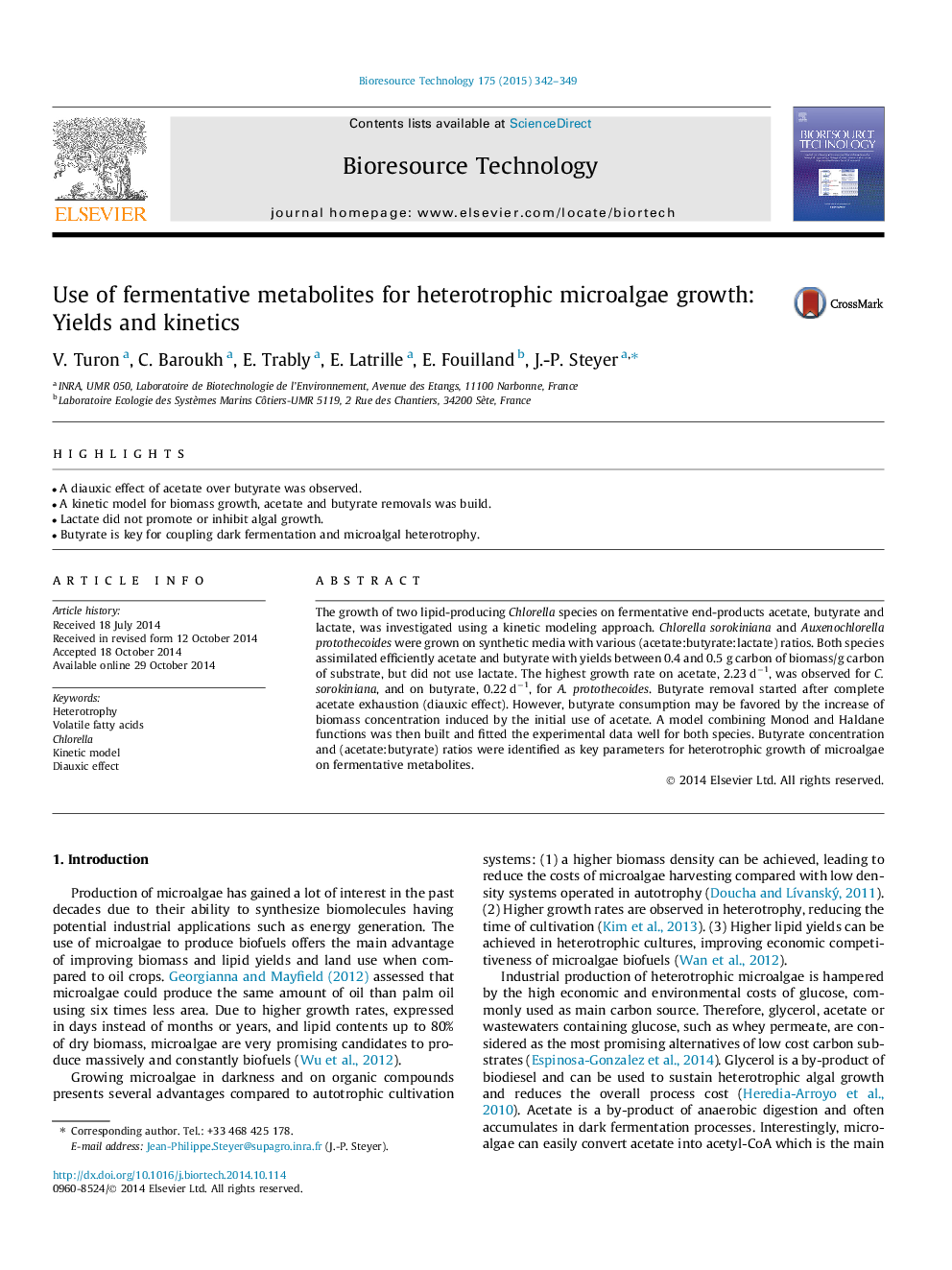| کد مقاله | کد نشریه | سال انتشار | مقاله انگلیسی | نسخه تمام متن |
|---|---|---|---|---|
| 680304 | 1459968 | 2015 | 8 صفحه PDF | دانلود رایگان |
• A diauxic effect of acetate over butyrate was observed.
• A kinetic model for biomass growth, acetate and butyrate removals was build.
• Lactate did not promote or inhibit algal growth.
• Butyrate is key for coupling dark fermentation and microalgal heterotrophy.
The growth of two lipid-producing Chlorella species on fermentative end-products acetate, butyrate and lactate, was investigated using a kinetic modeling approach. Chlorella sorokiniana and Auxenochlorella protothecoides were grown on synthetic media with various (acetate:butyrate:lactate) ratios. Both species assimilated efficiently acetate and butyrate with yields between 0.4 and 0.5 g carbon of biomass/g carbon of substrate, but did not use lactate. The highest growth rate on acetate, 2.23 d−1, was observed for C. sorokiniana, and on butyrate, 0.22 d−1, for A. protothecoides. Butyrate removal started after complete acetate exhaustion (diauxic effect). However, butyrate consumption may be favored by the increase of biomass concentration induced by the initial use of acetate. A model combining Monod and Haldane functions was then built and fitted the experimental data well for both species. Butyrate concentration and (acetate:butyrate) ratios were identified as key parameters for heterotrophic growth of microalgae on fermentative metabolites.
Journal: Bioresource Technology - Volume 175, January 2015, Pages 342–349
